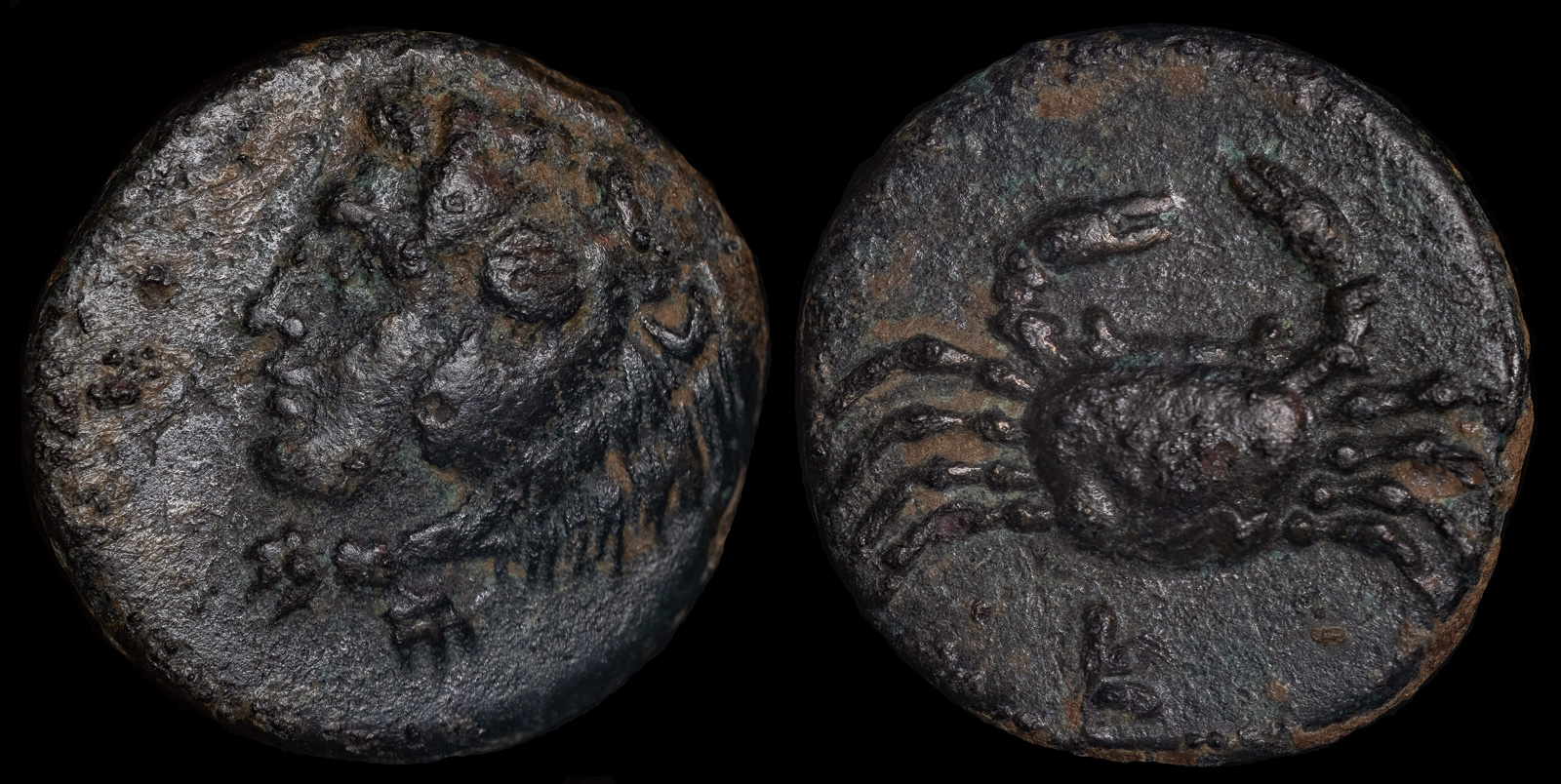
circa 400-300 BC.
Æ 13 mm, 1,68 g
Head of Herakles left, wearing lion’s skin. Rev. K Crab. shton, Beginning, n. 34 and pl. 4, 40. HGC 6, 1336 var.
The island of Kos is among the most ancient in Greek history, having fought on the side of the Greeks in the Trojan War. The goddess Leto was born there.
Herakles also visited Kos, likely the reason he’s depicted on this coin’s obverse. He along with his companions was driven there by a storm they encountered after stealing the girdle of Amazon Hippolyta. After an initial clash, they were driven to flee when the inhabitants went for reinforcements.
To escape, Herakles dressed in women’s clothes. They then fought again and, once victorious, Herakles married the king’s daughter Chalkiope. For some reason he continued to wear women’s clothes during the wedding. She bore him a son, Thessalos, whose descendants eventually participated in the Trojan War.
The crab was one symbol of Herakles, which explains its depiction on this coin’s reverse. His sanctuary was extremely important to the city and was located in the most prominent location. Each year, the island celebrated a two day festival to him.
In the 11th century BCE, the island was invaded by Dorians from Epidauros. They brought their worship of Asklepios, and in ancient times the sanctuary here and that in Epidauros were the most important in the Greek world to Asklepios. Today, it’s a major tourist attraction on the island.
The island made itself rich from those who wished to be healed at the sanctuary, and they also did well from trading in silk and wines.
After Alexander the Great’s death, the island fell to Antigonos I Monophtalmos, but was not long after occupied by Ptolemy I Soter. Under the Ptolemies, the island grew very rich from trading. It was their chief naval base in the region and even had a library subordinate to the famous one at Alexandria.
This is one of my favorite coins because I absolutely love the image of the crab.